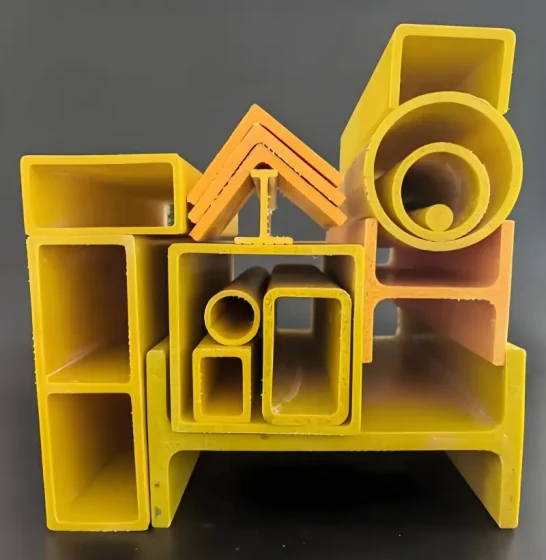At [Hengshui Hongwo Technology Co., Ltd], we’ve seen too many traditional wood beams fail—swelling with moisture, splintering under load, or attracting termites. That’s why we engineered fiberglass wood beams (also called fiberglass faux wood beams) to deliver the aesthetic appeal of natural timber with none of its weaknesses.
Where It Makes a Difference
Our fiberglass wood beams aren’t just for show—they solve real problems in demanding environments:
✔ Waterfront properties: Zero rot in docks, piers, or beachfront homes.
✔ High-humidity interiors: Saunas, greenhouses, and pool houses stay warp-free.
✔ Commercial façades: Mimics wood grain perfectly but won’t fade or crack under UV.
✔ Structural accents: Supports decorative loads without hidden corrosion.
“A luxury resort in Florida replaced 300+ cedar beams with ours after hurricane damage—now they’re on year 7 with no maintenance.” — Our Senior Project Manager
Installation and Usage Guide for FRP I Beam

Fiberglass Wood Beams
Specs That Matter
- Material: Pultruded fiberglass with UV-stable polymer coating
- Load capacity: 2x stronger than cedar of the same dimensions
- Standard sizes: 4″x6″ to 12″x12″ (custom lengths up to 40 ft)
- Weight: 30% lighter than oak, 60% lighter than wet-treated lumber
- Fire rating: Class A (meets IBC Section 1406)
Why Architects and Builders Switch
- No more seasonal movement—unlike wood, our beams won’t twist or check.
- Pre-finished options: Stainless steel screw covers mimic traditional joinery.
- Termite-proof: No pesticides needed, ever.
Fun fact: A historic theater used our fiberglass faux wood beams to restore its 1920s ceiling—even preservationists approved.
Trusted Where Failure Isn’t an Option
- Marine engineering: ASTM D635 compliant for flame spread.
- Municipal projects: Approved for covered bridges in 14 U.S. states.
- Luxury developers: Specified by 5+ Forbes-listed resort builders.
Third-party testing shows zero moisture absorption after 1,000 hours of salt spray exposure.
Installation: Faster Than Traditional Wood
Step 1: Mount with stainless brackets (no pre-drilling required for widths ≤8″).
Step 2: Use elastomeric sealant for expansion joints in climates below -20°F.
Step 3: Touch up any field cuts with our color-matched gel coat (included).
Pro tip: For curved applications, heat gently with a thermal blanket to reshape.
Maintenance? Almost None
- Decades between refinishing: Unlike wood, no sanding or resealing.
- Cleaning: Pressure wash up to 2,500 PSI (no splintering risk).
- Inspect annually: Check for debris buildup in textured grain patterns.
Critical Notes for First-Time Users
⚠ Avoid angle grinders: Fiberglass dust requires PPE—use carbide blades instead.
⚠ Thermal expansion: Allow 1/8″ gap per 10 ft for temperature swings >80°F.
⚠ Paint compatibility: Use acrylics only—solvents degrade the resin.
Lessons from the Field
- Biggest surprise: Clients often don’t believe it’s not real wood until they tap it.
- Contractor hack: One crew uses biscuit joiners for invisible seams in faux trusses.
FAQs We Get Weekly
Q: Can it be stained like real wood?
A: Yes—our proprietary coating accepts water-based stains without peeling.
Q: How does it handle extreme cold?
A: Stays flexible down to -60°F; we’ve installed these in Alaskan oil camps.
R&D: Breaking the “Fake Wood” Stereotype
We’ve spent 5+ years and $2M+ perfecting:
- 3D grain replication: Laser-scanned from white oak and teak.
- Hybrid core tech: Foam-filled options for 50% better insulation.
“We’re not just copying wood—we’re redefining what a beam can be.” — VP of Product Development
The Bottom Line
✅ Eliminates rot, insects, and splitting—forever.
✅ Cuts lifetime costs by 75% vs. maintained timber.
✅ Looks so authentic, even carpenters do double-takes.
Want to test a sample against your worst-case scenario? Challenge us—we thrive on it.
 Hengshui Hongwo Technology Co., Ltd.
Hengshui Hongwo Technology Co., Ltd.


 If our website has no specs you need, please contact online customer service or leave us a message. Our professional sales personnel will reply to you the first time!
If our website has no specs you need, please contact online customer service or leave us a message. Our professional sales personnel will reply to you the first time! Packing: in pallet
Packing: in pallet



WeChat
Scan the QR Code with WeChat